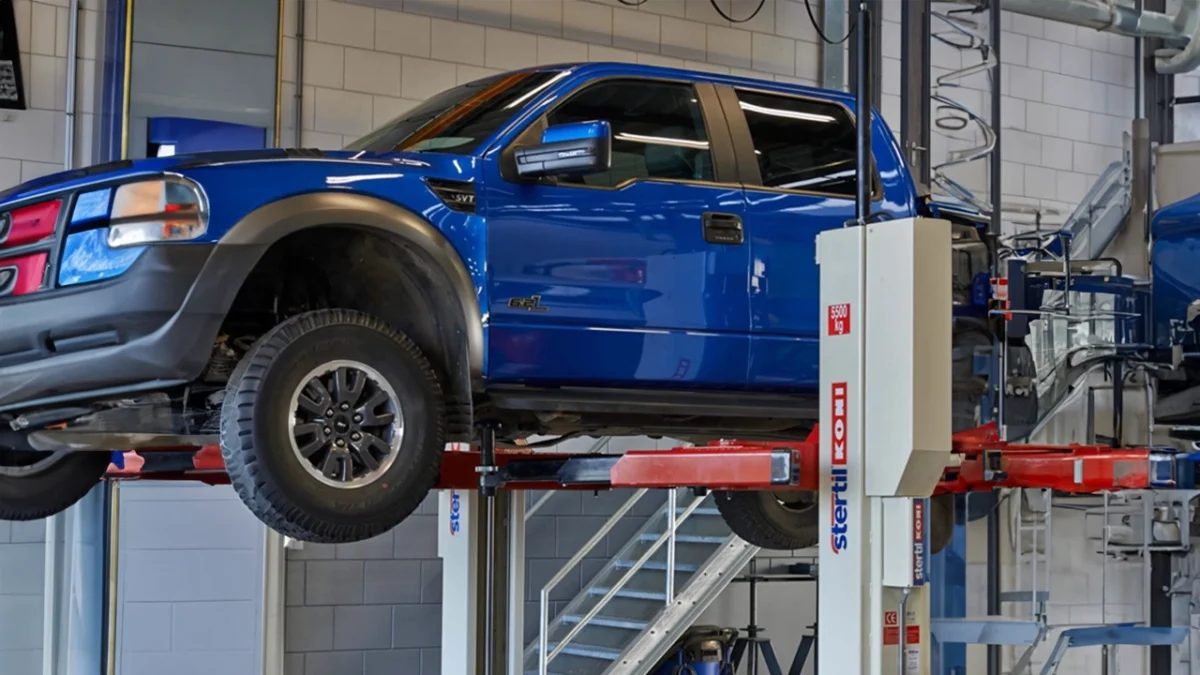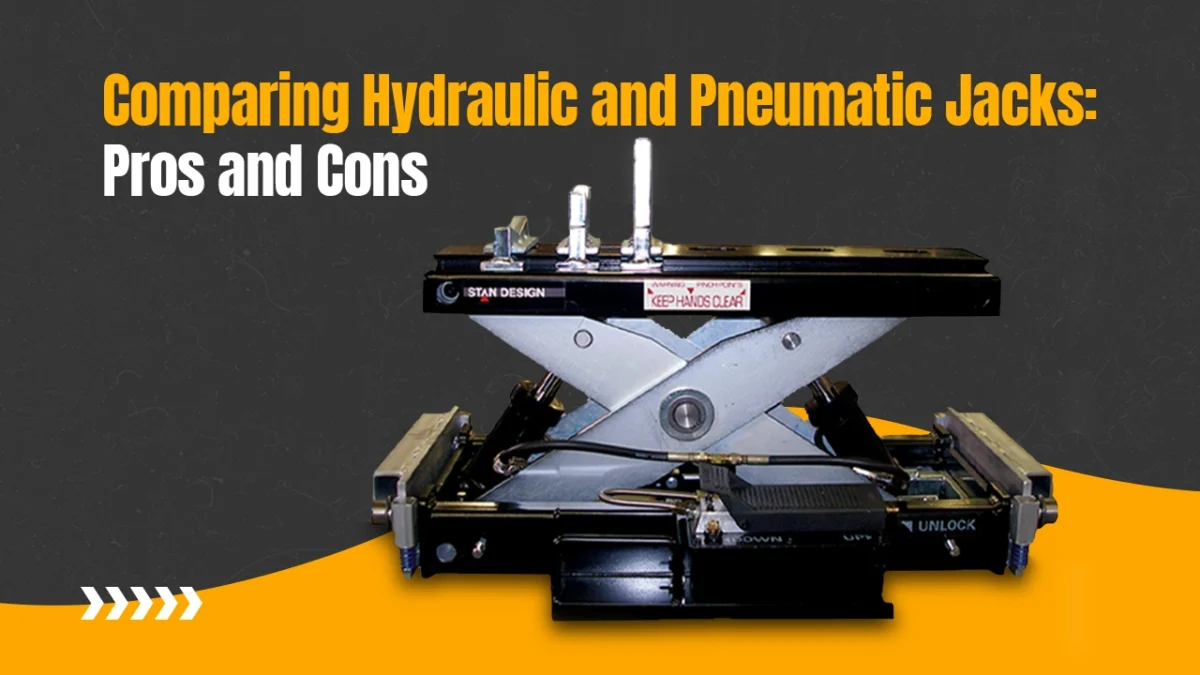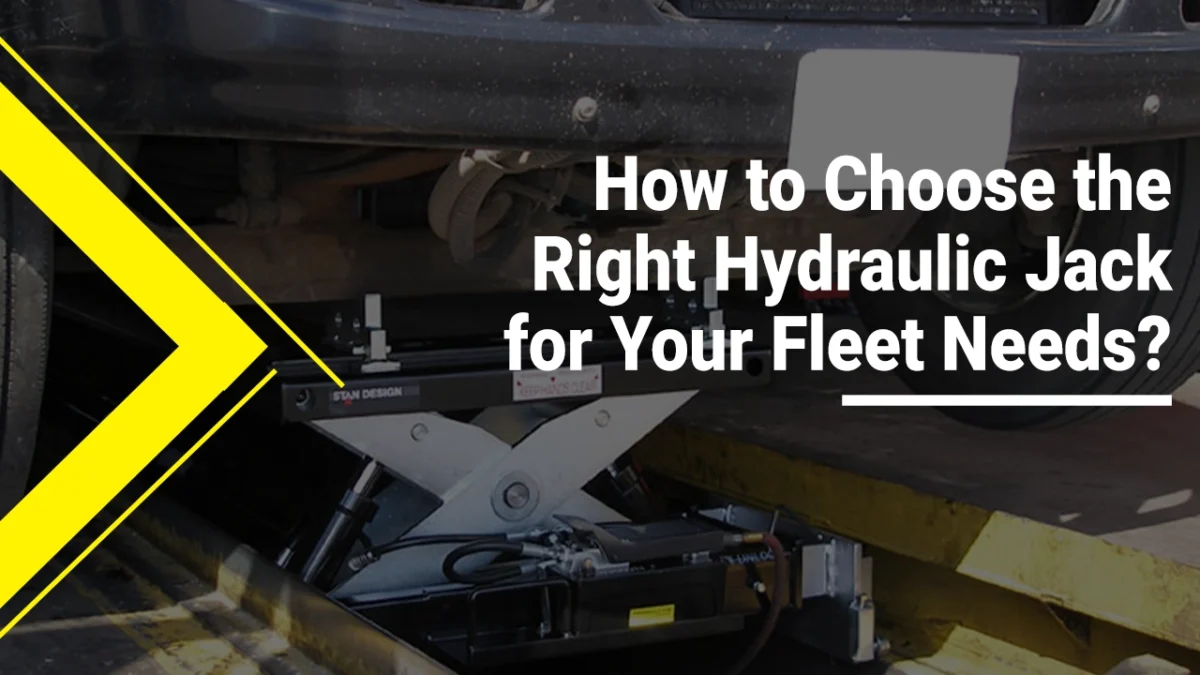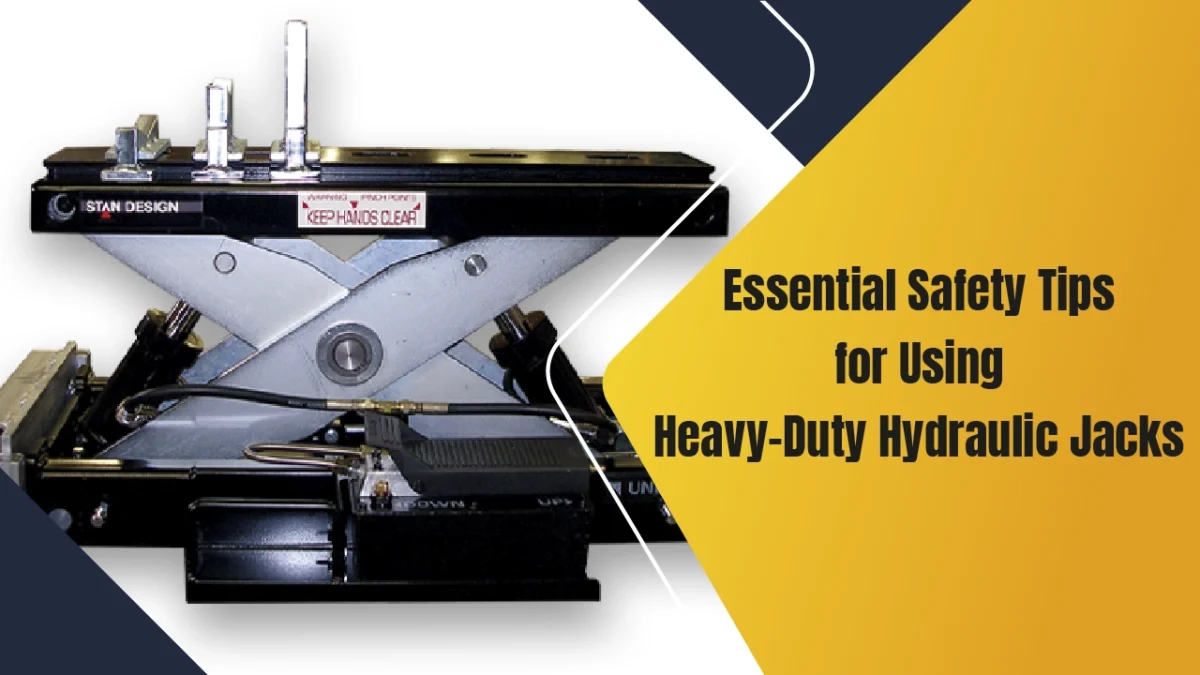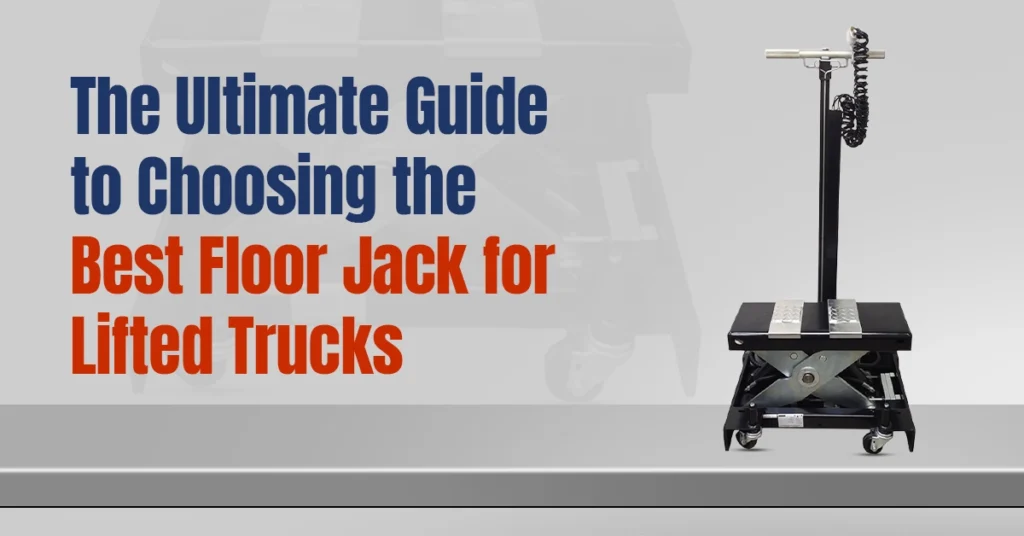Pneumatic Jacks
Pneumatic jacks are gadgets that utilize packed or compressed air to load, lift, suspend and lower heavyweight materials and apparatus easily, like heavy-duty vehicles, military-grade rucks, and modern hardware, among others.
The pneumatic jack converts electrical energy into mechanical power and the force is transferred by compressed air to lift, push, or move heavy components. The anatomy of a pneumatic jack can be broken down into these main parts, namely:
- Air inlet circuit
- Air outlet circuit
- Pneumatic cylinder
- Peristaltic pump
- Piston
- Hammer
- Air valve
- Relief valve
- Solenoid valve
Compressed air is routed via tubes to a pneumatic cylinder, which converts power into the peristaltic pump. An adjustable air solenoid valve is used to generate the reciprocating motion. The control unit sends the input to the solenoid valve.
The jack receives compressive force from the propeller, which moves on the cylinder. The jack is placed beneath the vehicle, where the car to be elevated will be lifted. The jack can lift the vehicle when the solenoid valve is turned on.
The piston connected to the jack provides the reciprocating motion of the car over the jack. Thus, the vehicle can be easily lifted using a pneumatic jack. The most common examples of this kind of jacks are inflatable air bag jacks.
Hydraulic Jacks
Hydraulic jack components work to produce applications in a range of fields including and beyond the automotive industry, like aircraft, bridges, cable tensioning, house moving, construction, general industrial, laboratory, locomotive, marine, mobile home, railroad, shipbuilding, shoring and stabilizing such as for tunnels and mines, tractors, and trailers.
Fluid mechanics, or Pascal’s principle, is the foundation for hydraulic jack operation. According to the law, any part of a fluid that is pushed or squeezed will also affect the other parts of the fluid.
Hydraulic jacks are devices used to load, lift, suspend and lower heavy weights like trucks, buses, sports utility vehicles, or other types of cars, for repairs and maintenance, among other items. The anatomy of any hydraulic jack can be broken down into these main parts, namely:
- Reservoir or buffer tank
- Pump with piston or plunger
- Pump lever or handle
Check valve
Main cylinder or ram
Release valve
Handle
The reservoir or buffer tank is the physical compartment of the hydraulic jack which holds the hydraulic fluid or pump oil. When the handle or lever of the pump with piston or plunger is mechanically lowered or raised, it builds up pressure in the adjoining compartment, i.e., the reservoir or buffer tank containing the fluid.
This applied pressure is transferred from the pump through a check valve and into the main cylinder or the ram, which extends out of the hydraulic jack body creating the required lifting force and lifting the load.
In essence, it indicates that any pressure change that occurs at any point in a confined, incompressible fluid is transmitted throughout the entire fluid without experiencing any loss. Consequently, the motion that is transferred through a fluid medium inside the machine’s cogs is what makes a hydraulic jack function.
Heavy-duty Hydraulic and Pneumatic Jack Comparison- Pros and Cons
Pros of Hydraulic Jacks
One of the key advantages of these jacks is the greater lifting force they are capable of generating.
This increased lifting force allows them to lift greater loads as well as for greater heights.
Cons of Hydraulic Jacks
Their disadvantages include the price point at which they are usually listed as compared with other jacks.
A key disadvantage is the obvious danger of accidental hydraulic oil spillage, which if gone unchecked can cause great damage to life and property.
Pros of Pneumatic Jacks
A key advantage of pneumatic jacks is that they are convenient and simple to operate because of their structure.
Another advantage includes the performance that they are able to deliver because of the anatomy of powerful air bags.
Cons of Pneumatic Jacks
A primary disadvantage of pneumatic systems, especially when compared to their hydraulic counterparts, is their durability.
Safety and reliability on pneumatic jacks also follow from the above point, although modern manufacturers are working to reverse this phenomenon.
Stan Design Inc. Heavy-duty Hydraulic and Pneumatic Jacks
Stan Design Inc. is a leader in the hydraulic and pneumatic jack industry in the Canadian and North American markets. With close to three decades of experience in fusing the science of manufacturing with the art of creative design, we implement cutting-edge technology to stay ahead of the competition in key offerings.
For instance, our products reduce the exhaustion of manual effort by switching traditional hand pumping methods to labor-intensive ways like Stan Design Inc.’s remote-controlled dead-man one button push hydraulic and pneumatic jacks.
Apart from that, our built-in multi-level safety lock mechanism, that engages automatically at different heights, eliminates the need for additional stands or chocks to secure the vehicle. This not only saves you money in purchasing these support materials but also prevents you from wasting precious time in the lifting process.
Heavy-duty Hydraulic and Pneumatic Jack Models to Choose from-
Floor Jacks
Scorpion TJ12S
Capacity- 24,000 lbs./ 12 Tons
Only 8’’ Collapsed Height
Lifts Over 15.75”
Scorpion TJ12SL
Capacity- 24,000 lbs./ 12 Tons
Only 7.5’’ Collapsed Height
Lifts Over 15”
Scorpion TJ14
Capacity- 28,000 lbs./ 14 Tons
Only 8.25” Collapsed Height
Lifts Over 20”
Scorpion TJ12E
Capacity- 24,000 lbs./ 12 Tons
Only 8’’ Collapsed Height
Lifts Over 15.75”
2 Extendable Arms
Scorpion MJ25
Capacity- 25,000 lbs./ 12.5 Tons
Lifts Over 36”
Extendable Beam with Stackable Adapters Designed for All Military Vehicle Applications
Pit Jacks
Scorpion PJ15
Capacity – 15,000 lbs.
Dual Hydraulics Arms
Extended Lifting Height – Over 20”
Size – 34” Wide
Expandable Size – 42” Wide
Scorpion PJ25
Capacity – 25,000 lbs.
Dual Hydraulics Arms
Extended Lifting Height – Over 20”
Size – 34” Wide
Expandable Size – 42” Wide
Scorpion PJ12S
Capacity – 12,000 lbs.
Dual Hydraulics Arms
Extended Lifting Height – Over 20”
Size – 31” Wide
Expandable Size – 46” Wide
Scorpion PJ15S
Capacity – 25,000 lbs.
Dual Hydraulics Arms
Extended Lifting Height – Over 20”
Size – 31” Wide
Expandable Size – 46” Wide
Scorpion PJ25S
Capacity – 25,000 lbs.
Dual Hydraulics Arms
Extended Lifting Height – Over 20”
Size – 32” Wide
Expandable Size – 46” Wide
Bridge Jacks
StanJack J6000H
Capacity – 6,000 lbs.
Heavy-Duty Hydraulics
Extended Lifting Height – Over 11”
StanJack J7000L
Capacity – 7,000 lbs.
Heavy-Duty Air Bag
Extended Lifting Height – Over 10.25”
Lowest Collapsed Height – Only 7”
StanJack J7500H
Capacity – 7,500 lbs.
Heavy-Duty Hydraulics
Extended Lifting Height – Over 10.25”
Lowest Collapsed Height – Only 7”
StanJack J9000H
Capacity – 9,000 lbs.
Heavy-Duty Hydraulics
Extended Lifting Height – Over 11”
StanJack J12000H
Capacity – 12,000 lbs.
Heavy-Duty Hydraulics
StanJack J15000H
Capacity – 15,000 lbs.
Heavy-Duty Hydraulics
Extended Lifting Height – Over 11”
StanJack J18000H
Capacity – 18,000 lbs.
Heavy-Duty Hydraulics
StanJack J25000H
Capacity – 25,000 lbs.
Heavy-Duty Hydraulics
StanJack J35000H
Capacity – 35,000 lbs.
Heavy-Duty Hydraulics
StanJack J50000H
Capacity – 50,000 lbs.
Heavy-Duty Hydraulics
Fast Lube Jacks
Pit Jacks J6000HFL
Capacity – 6,000 lbs.
Narrow 34.5” Top Beam
Heavy Duty Hydraulics
Pit Jacks J7500HFL
Capacity – 7,500 lbs.
Narrow 34.5” Top Beam
Heavy Duty Hydraulics
Pit Jacks J7000LFL
Capacity – 7,000 lbs.
Narrow 34.5” Top Beam
Heavy Duty Hydraulics
Pit Jacks J9000HFL
Capacity –9,000 lbs.
Narrow 34.5” Top Beam
Heavy Duty Hydraulics
Pneumatic Jacks
Pneumatic jacks are gadgets that utilize packed or compressed air to load, lift, suspend and lower heavyweight materials and apparatus easily, like heavy-duty vehicles, military-grade rucks, and modern hardware, among others.
The pneumatic jack converts electrical energy into mechanical power and the force is transferred by compressed air to lift, push, or move heavy components. The anatomy of a pneumatic jack can be broken down into these main parts, namely:
Air inlet circuit
Air outlet circuit
Pneumatic cylinder
Peristaltic pump
Piston
Hammer
Air valve
Relief valve
Solenoid valve
Compressed air is routed via tubes to a pneumatic cylinder, which converts power into the peristaltic pump. An adjustable air solenoid valve is used to generate the reciprocating motion. The control unit sends the input to the solenoid valve.
The jack receives compressive force from the propeller, which moves on the cylinder. The jack is placed beneath the vehicle, where the car to be elevated will be lifted. The jack can lift the vehicle when the solenoid valve is turned on.
The piston connected to the jack provides the reciprocating motion of the car over the jack. Thus, the vehicle can be easily lifted using a pneumatic jack. The most common examples of this kind of jacks are inflatable air bag jacks.
Hydraulic Jacks
Hydraulic jack components work to produce applications in a range of fields including and beyond the automotive industry, like aircraft, bridges, cable tensioning, house moving, construction, general industrial, laboratory, locomotive, marine, mobile home, railroad, shipbuilding, shoring and stabilizing such as for tunnels and mines, tractors, and trailers.
Fluid mechanics, or Pascal’s principle, is the foundation for hydraulic jack operation. According to the law, any part of a fluid that is pushed or squeezed will also affect the other parts of the fluid.
Hydraulic jacks are devices used to load, lift, suspend and lower heavy weights like trucks, buses, sports utility vehicles, or other types of cars, for repairs and maintenance, among other items. The anatomy of any hydraulic jack can be broken down into these main parts, namely:
Reservoir or buffer tank
Pump with piston or plunger
Pump lever or handle
Check valve
Main cylinder or ram
Release valve
Handle
The reservoir or buffer tank is the physical compartment of the hydraulic jack which holds the hydraulic fluid or pump oil. When the handle or lever of the pump with piston or plunger is mechanically lowered or raised, it builds up pressure in the adjoining compartment, i.e., the reservoir or buffer tank containing the fluid.
This applied pressure is transferred from the pump through a check valve and into the main cylinder or the ram, which extends out of the hydraulic jack body creating the required lifting force and lifting the load.
In essence, it indicates that any pressure change that occurs at any point in a confined, incompressible fluid is transmitted throughout the entire fluid without experiencing any loss. Consequently, the motion that is transferred through a fluid medium inside the machine’s cogs is what makes a hydraulic jack function.
Heavy-duty Hydraulic and Pneumatic Jack Comparison- Pros and Cons
Pros of Hydraulic Jacks
One of the key advantages of these jacks is the greater lifting force they are capable of generating.
This increased lifting force allows them to lift greater loads as well as for greater heights.
Cons of Hydraulic Jacks
Their disadvantages include the price point at which they are usually listed as compared with other jacks.
A key disadvantage is the obvious danger of accidental hydraulic oil spillage, which if gone unchecked can cause great damage to life and property.
Pros of Pneumatic Jacks
A key advantage of pneumatic jacks is that they are convenient and simple to operate because of their structure.
Another advantage includes the performance that they are able to deliver because of the anatomy of powerful air bags.
Cons of Pneumatic Jacks
A primary disadvantage of pneumatic systems, especially when compared to their hydraulic counterparts, is their durability.
Safety and reliability on pneumatic jacks also follow from the above point, although modern manufacturers are working to reverse this phenomenon.
Stan Design Inc. Heavy-duty Hydraulic and Pneumatic Jacks
Stan Design Inc. is a leader in the hydraulic and pneumatic jack industry in the Canadian and North American markets. With close to three decades of experience in fusing the science of manufacturing with the art of creative design, we implement cutting-edge technology to stay ahead of the competition in key offerings.
For instance, our products reduce the exhaustion of manual effort by switching traditional hand pumping methods to labor-intensive ways like Stan Design Inc.’s remote-controlled dead-man one button push hydraulic and pneumatic jacks.
Apart from that, our built-in multi-level safety lock mechanism, that engages automatically at different heights, eliminates the need for additional stands or chocks to secure the vehicle. This not only saves you money in purchasing these support materials but also prevents you from wasting precious time in the lifting process.
Heavy-duty Hydraulic and Pneumatic Jack Models to Choose from-
Floor Jacks
Scorpion TJ12S
Capacity- 24,000 lbs./ 12 Tons
Only 8’’ Collapsed Height
Lifts Over 15.75”
Scorpion TJ12SL
Capacity- 24,000 lbs./ 12 Tons
Only 7.5’’ Collapsed Height
Lifts Over 15”
Scorpion TJ14
Capacity- 28,000 lbs./ 14 Tons
Only 8.25” Collapsed Height
Lifts Over 20”
Scorpion TJ12E
Capacity- 24,000 lbs./ 12 Tons
Only 8’’ Collapsed Height
Lifts Over 15.75”
2 Extendable Arms
Scorpion MJ25
Capacity- 25,000 lbs./ 12.5 Tons
Lifts Over 36”
Extendable Beam with Stackable Adapters Designed for All Military Vehicle Applications
Pit Jacks
Scorpion PJ15
Capacity – 15,000 lbs.
Dual Hydraulics Arms
Extended Lifting Height – Over 20”
Size – 34” Wide
Expandable Size – 42” Wide
Scorpion PJ25
Capacity – 25,000 lbs.
Dual Hydraulics Arms
Extended Lifting Height – Over 20”
Size – 34” Wide
Expandable Size – 42” Wide
Scorpion PJ12S
Capacity – 12,000 lbs.
Dual Hydraulics Arms
Extended Lifting Height – Over 20”
Size – 31” Wide
Expandable Size – 46” Wide
Scorpion PJ15S
Capacity – 25,000 lbs.
Dual Hydraulics Arms
Extended Lifting Height – Over 20”
Size – 31” Wide
Expandable Size – 46” Wide
Scorpion PJ25S
Capacity – 25,000 lbs.
Dual Hydraulics Arms
Extended Lifting Height – Over 20”
Size – 32” Wide
Expandable Size – 46” Wide
Bridge Jacks
StanJack J6000H
Capacity – 6,000 lbs.
Heavy-Duty Hydraulics
Extended Lifting Height – Over 11”
StanJack J7000L
Capacity – 7,000 lbs.
Heavy-Duty Air Bag
Extended Lifting Height – Over 10.25”
Lowest Collapsed Height – Only 7”
StanJack J7500H
Capacity – 7,500 lbs.
Heavy-Duty Hydraulics
Extended Lifting Height – Over 10.25”
Lowest Collapsed Height – Only 7”
StanJack J9000H
Capacity – 9,000 lbs.
Heavy-Duty Hydraulics
Extended Lifting Height – Over 11”
StanJack J12000H
Capacity – 12,000 lbs.
Heavy-Duty Hydraulics
StanJack J15000H
Capacity – 15,000 lbs.
Heavy-Duty Hydraulics
Extended Lifting Height – Over 11”
StanJack J18000H
Capacity – 18,000 lbs.
Heavy-Duty Hydraulics
StanJack J25000H
Capacity – 25,000 lbs.
Heavy-Duty Hydraulics
StanJack J35000H
Capacity – 35,000 lbs.
Heavy-Duty Hydraulics
StanJack J50000H
Capacity – 50,000 lbs.
Heavy-Duty Hydraulics
Fast Lube Jacks
Pit Jacks J6000HFL
Capacity – 6,000 lbs.
Narrow 34.5” Top Beam
Heavy Duty Hydraulics
Pit Jacks J7500HFL
Capacity – 7,500 lbs.
Narrow 34.5” Top Beam
Heavy Duty Hydraulics
Pit Jacks J7000LFL
Capacity – 7,000 lbs.
Narrow 34.5” Top Beam
Heavy Duty Hydraulics
Pit Jacks J9000HFL
Capacity –9,000 lbs.
Narrow 34.5” Top Beam
Heavy Duty Hydraulics



